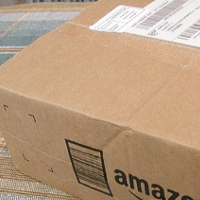5 Ways You’re Wasting Order Fulfillment Time.
by Chelsea Camper | Last Updated December 30, 2015Getting customers their orders as quickly and accurately as possible is top priority. This means your order fulfillment system has to be up for the challenge of not wasting any time and being as close to perfectly accurate as possible.
Could you be wasting time with your order fulfillment system? Here are five ways you could be wasting valuable order fulfillment time!
1. Not Having an Organized Warehouse
Organizing your warehouse should be something you’re already on top of. Maybe you were on top of it when your business started seven years ago. You had The Most Organized Warehouse Ever. Then your company started adding products, you entered a business boom three years ago and your warehouse manager couldn’t keep up and began sticking products wherever he could.
If this has happened to you it might be time for a nice, fresh re-organization of your warehouse. Start by figuring out what products are the most popular and place them in an easy to reach place. Next figure out what products are typically purchased together. For example, if you have a lot of people buying spoons chances are they’ll want forks and knives as well. By placing all three near each other your employees can quickly pick and pack the package without having to run around the warehouse.
2. Not Collating Your Shipping Forms
Collating your shipping forms can help you save a lot of time, money, and Advil. First let’s go over what “collating shipping forms” means before we talk about how it can help you.
To collate means “to merge,” and when we’re talking about “collating shipping forms” the forms we’re talking about are a collection of any of the following:
- Shipping label
- Packing list
- Invoice
- Return label
- Return information
- Terms of Service
- Or any other type of form you include when shipping products
So essentially what we’re talking about is, for example, merging the shipping label, invoice, and packing list onto one sheet instead of having them on two or three separate sheets.
Can you start seeing where this can help you? Let’s take a deeper look.
Time.
There are few things more valuable than time. Your customers want their ordered items as fast as you can send them; having your pickers and packers shuffling around trying to match a packing list with the right shipping label isn’t helping to get your customers their items. By having all of your important shipping forms on a single sheet your pickers and packers only have to…well, pick and pack!
Money.
The first obvious argument here is that time is money and so by saving time you’re saving money! Which is true, but there’s more. By collating your shipping forms you can increase your shipping accuracy because you can print the packing list right beside the shipping label on the very same sheet. Using label sheets with a label for the shipping label already built into the sheet, you can print your shipping label on a peel out label and the packing list on regular paper that can be easily detached from the shipping label via perforation. How helpful is that? With the packing list and shipping label on the same sheet your employees will have an easier time of putting the right shipping label on the right package.
Advil.
With your customers happy that they’re getting their products quickly and fewer incorrect orders being sent back to you, your headaches will start to decrease and you can lay off the Advil. It’s nice to have a smoothly running warehouse, isn’t it?
3. Not Using a Packing List
Remember how we were just talking about merging packing lists with your shipping labels onto the same sheet? Well, that’s all fine and dandy as long as you’re actually using a packing list!
If you’re not using a packing list as part of your order fulfillment system I highly recommend you start. Packing lists help make sure every item the customer has ordered gets put in the package to be shipped to the customer. It should detail the quantity, size, color, model number, and anything else that’s relevant to your products.
There are many eCommerce platforms that can help you create packing lists for your customers. Check out our eCommerce Reference Page to get a taste for just a few of them.
4. Not Having the Right Sized Boxes
If you want to pack your items like a pro having the right sized boxes is a must. Too big of a box will cost your in packing material to prevent the items from being thrown around the box. Too small of a box will make it hard for your employees to pack the items, which could cause the items to get damaged before the package is even sealed up!
Those whose products range from tiny, handheld items to those that need a forklift to be moved should also have a wide range of different sized boxes. With products that vary that much, you should have more than just a small, medium, and large size box (if you’re using forklifts you probably need crates instead of boxes!).
5. Not Clearly Labeling Your Inventory
Finally, we loop back around to your warehouse layout. It’s not enough to simply organize your warehouse, your employees need to be able to quickly identify which bin contains the item they’re looking for.
Labeling your bins, boxes, and/or baskets with large, easy to read labels or cards can also help to speed up your order fulfillment. When your employees only have to glance around the isle to see the large yellow card labeled “Blue Widgets Model #34” to pull three of them for a customer, they can fill that order faster and move onto the next.
How else do you keep your order fulfillment system running quickly and accurately?
Want to design your own shipping label sheet?
Image: Marcin Wichary





